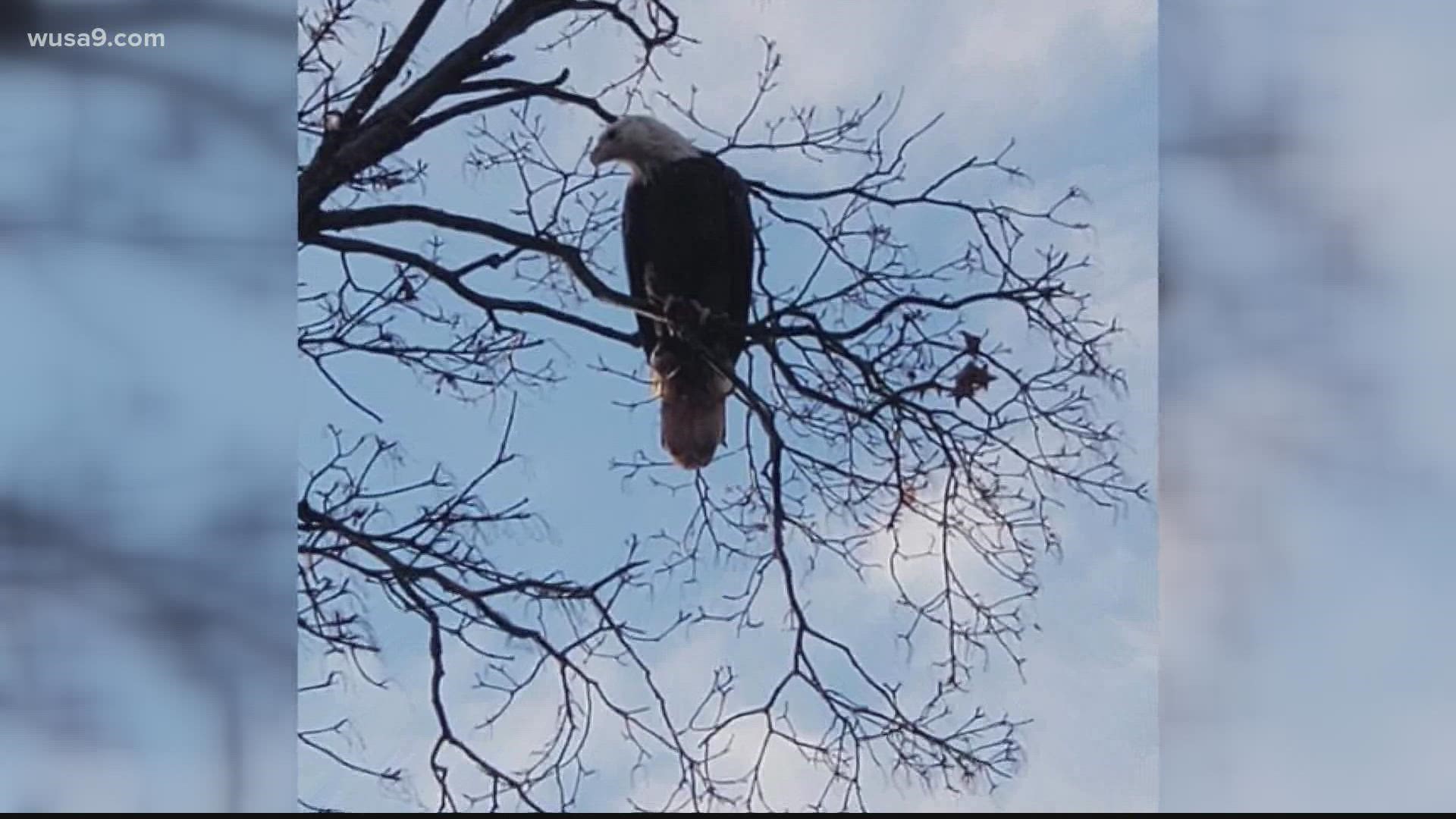WASHINGTON — Attention, bird watchers! Now is the time to keep an eye on the sky for bald eagles. You may see more of the majestic birds in our area because the birds are pairing up and begin laying their eggs by March.
Our viewer Keke Willis sent us a photo of an eagle she spotted in Upper Marlboro, Maryland.
Chris Eberly, Executive Director of Maryland Bird Conservation Partnership, said seeing more of our national symbol is the result of a major success story.
"From a low of 44 nesting pairs in 1977, the population has recovered from the effects of DDT to be estimated at more than 1,400 pairs in Maryland, and more than 3,100 pairs in the Chesapeake Bay area," Eberly said.
Bald eagles were once labeled as endangered in Maryland and throughout much of its range. The drop in bald eagle numbers throughout its range was attributed to the use of the pesticide DDT which made eagle eggs thin and easily breakable. A ban on the use of DDT has since allowed the birds to make a tremendous comeback.
Now, the Chesapeake Bay region hosts the largest concentration of bald eagles in the lower 48 states.
"DDT impacted the entire Chesapeake Bay populations of eagles. Monitoring data will help us identify any localized population declines so we can investigate the possible causes," Eberly said.
State-funded surveys of Maryland’s bald eagle population were discontinued in 2005. However, the Maryland Bird Conservation Partnership is recruiting volunteers to find and report bald eagle nests throughout Maryland and the District of Columbia, and to assist with monitoring these nests.
"We have noticed a steady increase in the number of nests, especially as new nests are reported in areas closer to humans, including communication and cell towers. In addition, we are seeing more nests that are fledging 3 eaglets, which was unheard of 20 years ago," Eberly said.
Eberly said seeing eagles closer to humans is a good thing.
"The good news is that eagles seem to have become acclimated to human activity and will nest in unusual places, like on a light pole in the middle of I-95/I-495 near National Harbor," Eberly said.
In Virginia, the Dulles Greenway Wetlands, a 149-acre preserve in Leesburg has been home to two American bald eagles since 2005. Late last year, the Greenway installed high definition eagle cams to keep an eye on the eagles. They just laid two eggs this season.
The Greenway is currently holding a contest for Loudoun County students to name the two eagles currently in the nest. The Geenway is set to announce the winning names on February 11.
Keep your eyes peeled for bald eagles. While spotting them has become more common, Eberly said they are still worth seeing.
"What was a rare sighting 50 years ago is now a much more common but nonetheless breathtaking one today," he said.

